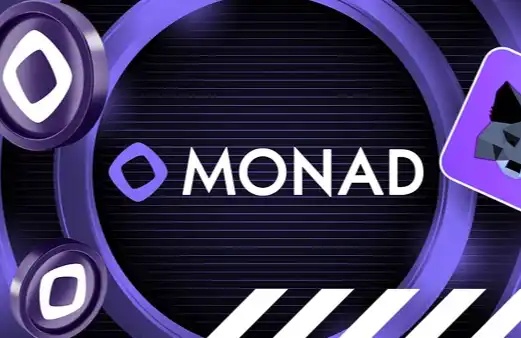Zeepr V3: A New DeFi Narrative
Before exploring the next generation of on-chain trading, our team has observed and experienced several cycles in the crypto world and witnessed the construction of the entire DeFi field from scratch. With the experience of leading research and product design at Huobi and OKX, we believe that unlike on-chain spot trading, the current on-chain perpetual trading represented by GMX's AMM model has more potential to be explored. Therefore, we put forward here the idea and product design of Zeepr V3, which we believe is the most innovative and exciting opportunity that can be brought to the DeFi market this year.
Idea germination: full chain and full token
Our journey began in August 2023, when our passionate team came together with the goal of creating a trading layer that is inclusive enough for various trading scenarios and can even support the processing of illiquid asset transactions.
First of all, we unanimously agreed that perpetual contracts, as a unique derivative, are very popular in crypto trading. Derived from traditional futures contracts, perpetual contracts offer no expiration date, allowing traders to flexibly choose their holding period without paying the costs and risks associated with expiration dates. This flexibility is critical in the crypto market, where the inherent characteristics of cryptocurrencies greatly reduce maturity and delivery costs. Coupled with a simplified trading experience, perpetual contracts have become one of the most profitable products in the industry.
However, we also recognize the lack of liquidity and the significant problem of trading being prone to collapse under extreme or one-sided market conditions. To address these challenges, we launched Zeepr V3, which aims to solve every problem we found in perpetual trading.
First, let's review the history of perpetual trading. The current mainstream perpetual contract trading venue is on centralized trading platforms (CEX), which usually adopt the central price order book (CLOB) model as its matching engine algorithm. CLOB manages and aggregates buy and sell orders from different market participants and arranges these orders in chronological order to form an order book that reflects the market supply and demand dynamics. It is reported that Binance, the largest centralized trading platform, processes up to 100,000 orders per second with an average latency of only 5 milliseconds. This efficient matching engine enables CEX to process a large number of orders quickly and accurately, meeting the needs of perpetual contract trading for submitting, modifying or canceling a large number of orders in real time.
However, as a clearing counterparty, CEX acts as the only counterparty for all matching orders, thereby hiding the identities of individual buyers and sellers, and there are certain opacity issues and regulatory risks. In addition, although contract users can transfer assets to CEX at any time, their private keys are not in their hands, and the assets are actually fully entrusted to the trading platform. CEX stores these assets and data in a centralized database. Once the database is attacked or assets are misappropriated, the security of the assets cannot be guaranteed. If the entire transaction process is moved to the blockchain, the problem will be solved.
Then we saw the emergence of dYdX and GMX, which led and represented the order book and AMM models of current on-chain perpetual trading.
However, to date, there is still a large gap in the field of on-chain perpetual contracts. According to CoinGecko's market analysis report, decentralized exchanges (DEX) accounted for only 1.9% of the total crypto derivatives trading volume in 2023, and centralized exchanges (CEX) still dominated. For spot, this proportion is 8.6%. And from the perspective of tradable asset types, the contract products on the market mainly support U-based mainstream asset transactions. Currency-based users, especially on-chain currency holders, lack direct perpetual contract trading scenarios. At present, on-chain spot trading can be said to have the final product form, such as Uniswap and other projects, but on-chain perpetual contract trading still lacks a mature product form.
From V1 to V2: Realizing Multi-chain Transaction Infrastructure
Last August, the first version of Zeepr was released. Initially, it adopted the Arbitrum single-chain model. However, we soon discovered the limitations of the single-chain model - the high gas fees and network congestion of the blockchain discouraged participants. At the same time, in the process of our business expansion, we found that many partners were built on different public chains, and the transaction scenarios were far more complicated than centralized Crypto transactions.
For example, many popular assets on the chain have sufficient community foundations, but the price fluctuations are huge; for example, there are many DeFi derivative assets such as staked assets on the chain, and both the project party and the holders of staked assets hope to find more financial scenarios for them; for another example, many projects or currencies are planning their own layer1 or layer2 public chains, but before they can support transaction scenarios directly facing C-end users, they must go through a long process of introducing infrastructure.
These findings drove us to quickly adjust and innovate, opening a new iterative process for Zeepr V1. From V1 to V2, we broke through the single-chain situation✲ and moved towards cross-chain and built-in oracles. We developed from a single-chain but fully functional, low-slippage, and no overnight fee Perpetual DEX to a Trading Layer that exists as the underlying infrastructure and can support all partners through one-click access. After V2 is launched, the on-chain coin holding community can directly unlock the Perpetual trading scenario of the tokens they hold through the decentralized wallet, and use the tokens in their hands as margin directly on the chain to realize the appreciation and preservation of assets.
First, in order to solve the limitations of the single-chain model, we started to develop a cross-chain bridge. The establishment of the cross-chain bridge laid the foundation for Zeepr to achieve multi-chain interaction, allowing users to exchange and interact assets across different blockchains. For any newly developed public chain, we can encourage users to cross-chain assets from other chains to the new chain to participate in activities in the first second of connecting to the public chain. The development of a built-in cross-chain bridge also allows us to more conveniently support partners with multi-chain deployments, allowing us to adapt to more trading scenarios and needs.
Secondly, we decided to build a built-in oracle in Zeepr because we found that in the current perpetual contract market, order book-type platforms, such as dYdX, rely on external price discovery and also need to use Amazon Web Services for off-chain operations for order matching. However, this model has extremely high liquidity requirements and is highly dependent on market makers. At the same time, affected by the limitations of multi-chain support of third-party oracles in the market at that time, in order to improve Zeepr's transaction accuracy and response speed, we built-in oracles to ensure that no matter which public chain, once we access it, price data can be synchronized with mainstream financial assets in real time, thus providing a smoother and more efficient trading experience.
From V1 to V2, we covered a very diverse business scenario, such as:
· Cooperation between Zeepr and public chains: Zeepr cooperates with public chains to encourage the pledge and trading of public chain native assets on the chain through a series of operational activities. During the transaction process, users can not only participate in the incentive plan on the public chain side, but also participate in Zeepr's operational activities;
· Cooperation between Zeepr and DeFi derivative assets: DeFi derivative assets, such as LSDFi assets, have the need to enrich their asset usage scenarios in order to extend the time users hold pledged assets. Zeepr cooperates with such projects, embeds their derivative assets into the Zeepr ecosystem in a Lego-like manner, and gives them a perpetual trading scenario;
· Zeepr cooperates with the on-chain Meme community: The Meme community has the need to mobilize users' trading enthusiasm. The Meme project has a short life cycle and large asset fluctuations, but it can gather community users in a short period of time. Zeepr cooperates with such projects to directly acquire users of the Meme community through interesting operating methods and incentives.
So, after we officially released the Zeepr V2 version in December last year, we realized our original concept of "full chain and full token" in product form, and also obtained cooperation from many public chains and project parties. For example, in a 10-day
In the trading campaign, our trading community generated 3.5 times the total token trading volume. The accumulation of these perpetual data with tokens as margin supports the further optimization and iteration of our products.
Now, let's return to the fundamental problem of perpetual trading or all token trading - liquidity.
As we all know, the liquidity of centralized trading platforms is usually provided by market makers. In the process of long-short matching, trading platforms often actively supplement liquidity or "make" liquidity data, leading to the risk of centralization. At the same time, for non-mainstream currencies, due to the lack of market makers and liquidity, users have no way to conduct smooth perpetual transactions. In the scenario of on-chain perpetual transactions, the AMM model of GMX that we usually see also has a high dependence and requirements on liquidity and market environment.
The multi-asset pool in the GMX model provides global liquidity, with the main assets concentrated on mainstream assets with very good liquidity such as ETH, BTC and stablecoins. By highly incentivizing players such as whales on the chain and DeFi Native, the liquidity of mainstream assets is gathered in one pool. In this model, the introduction of assets with less liquidity or the easy loss of control in extreme market conditions may cause LPs to face greater risks and losses. In order to control risks, in the GMX model, when encountering a one-sided market, traders' positions will have to be controlled, resulting in certain problems in the trading experience; at the same time, when the business expands, there are also restrictions on the support of currencies, which affects its scalability.
Similarly, in the Zeepr V2 model, which also uses LP and Traders to bet against each other, we also encountered the problems faced by GMX. In terms of liquidity startup, our V2 version starts from the currency standard, and the initial liquidity is provided by the token issuer or large households with a large amount of currency to ensure the depth of initial transactions. Although this method can quickly acquire trading users, LPs also face greater uncertainty and risks in one-sided market conditions.
So, we started to conceive and design V3, and developed our product in the form of synthetic assets. We call it PvP AMM.
Zeepr V3: PvP AMM Trading Layer
The core of Zeepr V3 is to use synthetic assets and exchange rates to control risks, turning the bet between LPs and traders into a game among users across the entire network, bringing a new decentralized price trading solution.
The concept of synthetic assets makes trading no longer dependent on LPs, but treats synthetic assets themselves as LPs, solving the problems of trading depth and unilateral market conditions. This mechanism not only changes the way of trading, but also eliminates problems such as overnight fees, unilateral market conditions and slippage, providing traders with a more efficient and barrier-free trading experience. In the V3 model, the impact of depth will be transferred to the exchange rate difference, and the exchange rate algorithm is real-time, which users can observe accurately.
Therefore, users no longer need to worry about order matching and liquidity issues, nor do they face the uncertainty of final profit and loss when liquidity is low. They only need to pay attention to the profit and loss of synthetic assets (zTokens) caused by the transaction itself, which completely follows the mathematical results of the transaction. If they want to exchange their zTokens back to native tokens, they only need to pay attention to the exchange rate between zTokens and native tokens.
In Zeepr V3, the profit and loss percentage of trading orders is calculated based on the index price, and the corresponding quantity is redeemed. This means that the trader's ultimate real profit or loss depends on the relative profit or loss, and is no longer affected by one-sided market conditions.
User transaction process:

1. Example
Let’s assume
· Alice uses 100 zTokens to go long 10x at BTC 10,000;
· Bob uses 200 zTokens to go short 10x at the same price;
At this time, the principal of both parties is 300 USDC (according to zUSDC:USDC = 1:1).
When the price drops to $9,500:
· Alice generates: (10,000 - 9,500) / 10,000 * 1,000 = 50 zUSDC loss
· Bob generates: (10,000 - 9,500) / 10,000 * 2,000 = 100 zUSDC profit
At this time, the protocol will execute:
· Destroy Alice’s loss zUSDC (-50)
· Bob’s profit from minting zUSDC (+100)
Current zUSDC price: 300 USDC / (300 zUSDC - 50 zUSDC + 100 zUSDC) = 0.86 USDC
· Alice’s account value: (10050) * 0.86 = 43 USDC
· Bob’s account value: (200100) * 0.86 = 258 USDC
Other possible results are as follows:

The above example simply illustrates the four characteristics of the PvP AMM protocol and illustrates that when PvP AMM is used compared to traditional transactions, Different situations when the long-short ratio in the model is unbalanced: · When the price moves toward the minority, the minority makes more profit while the majority loses less (see the third bar, when the price rises to 10,500) · When the price moves significantly toward the minority, the minority makes more profit while the majority's loss remains the same (see the fourth bar, when the price rises to 11,000) · When the price moves toward the majority, the majority's profit decreases while the minority's loss increases. (see the first bar, when the price falls to 9,500) · When the price moves significantly toward the majority, the majority's profit decreases while the minority's loss remains the same.
(See the second one, when the price dropped by 9,000)
From the above examples, we can further infer that:
· Even when only two people hold a certain asset, the moment two people exchange the asset for zToken, the two people can form a counterparty transaction, regardless of whether the two people open an order at the same time or only one person opens an order. In the order book model, the orders of both long and short parties need to be matched; while in the current mainstream AMM model, one person must play the role of LP, that is, holding LP tokens, and cannot open an order;
· You can trade as much as you want even in low liquidity. In the above case, both provide only 300 USDC liquidity;
· Even if two people open orders in the same direction, they can still be traded, and the final profit of the trader depends on the relative performance between the traders. This kind of trading scenario cannot be supported by the order book model; in the current mainstream AMM model, when a one-sided market occurs, it is very easy for a large number of traders in the entire system to open positions in the same direction, causing LPs to face extremely high risks, or in order to protect LPs, traders may be forced to close their positions;
· The above is just the case of two people. As more people join in, the long-short ratio will tend to balance, and the final result of the transaction will be close to the mathematical result of the ideal centralized perpetual transaction, while eliminating a series of natural risks of centralized perpetual transactions.
At the same time, when the size of the neutral staking pool is much larger than the net PnL, the results of local transactions have a great impact on the overall price of zToken. Even if the net PnL is magnified 10 times, according to our calculations, the final zToken (taking zUSDC and USDC as examples) price remains at 0.98 USDC.
2. Automatic balancing of liquidity pools
Now, you may ask, how does the system encourage the elimination of the imbalance of the long-short ratio and incentivize traders to join the system?
PVP AMM achieves automatic balancing of the long-short ratio by attracting new minority orders.
In the previous example of Alice and Bob, the long-short ratio is set to 1:2. For Alice on the long side, there are two friendly expectations, the profit results are 3rd and 4th, that is, the price rises to $10,500 and the price rises to $11,000. An unchangeable complete loss result is 2nd, that is, the price falls to $9,000. There is also an unfriendly loss result of 1st, that is, the price falls to $9,500.
At this time, Charlie joins the minority party Alice's camp in the PvP AMM model (going long), and shorts the same scale in Binance or other
CEX. Once:
· Result 3rd and 4th, C's profit from PvP-AMM long orders will be greater than the loss of Binance short orders;
· Result 2nd, C's profit from Binance short orders is completely equal to the loss in the PvP AMM model;
· Result 1st, C's profit from Binance short orders cannot cover the loss in the PvP AMM model.
Result 1st can be completely transformed into results 2nd, 3rd, and 4th by waiting for market changes, providing a safe space for arbitrage. In traditional trading, API/Robot/SmartMoney are usually aggressive to ordinary traders. In the PvP-AMM model, they are completely harmless and always protect the long-short balance of the protocol.
3. Advantages of PVP AMM
· Instant order initiation and settlement: There is no need to wait for the counterparty's order to match, and the order can be initiated and settled immediately, which improves the transaction efficiency;
· No transaction spread: There is no transaction spread during the transaction, which ensures the efficiency and fairness of the transaction;
· Flexible combination of trading targets: Based on the support of index prices, a more flexible combination of trading targets is provided to meet different investment needs;
· The growth of the protocol treasury scale is proportional to the average transaction volume: As the transaction volume increases, the scale of the protocol treasury also increases accordingly
· The lower the value volatility of zToken;
· The volatility of zToken is related to the difference in user positions: The larger the scale of zToken, the smaller the volatility, which improves the stability of assets;
· Margin is only used to peg zToken: Margin does not participate in settlement, no need to pay borrowing fees, and maximizes capital utilization;
· Maximum capital utilization: There is almost no unilateral position system, and the value of zToken can be increased when the net PnL is negative, which enhances the flexibility and utilization of funds.
PvP AMM marks a major innovation in the on-chain perpetual contract trading model. Through the synthetic asset model and PVP AMM model, it provides users with a more efficient, barrier-free and fair trading experience. In summary, from the perspective of trading scenarios, PvP AMM can fully support diverse trading scenarios and low-liquidity on-chain assets, further expanding our business philosophy of "all tokens, all chains" implemented in V2, and eliminating the risks that may arise in V2. From the perspective of user experience, the product's decentralization, full on-chain, no slippage, no overnight fees, predictable transaction outcomes, safe arbitrage space, and tolerance to extreme and unilateral market conditions will provide trading users with a revolutionary trading experience.
Learn more: Governance tokens as the core of the balancing system
Like all other DeFi protocols, Governance tokens will be an indispensable part of our ecosystem.
The diversity of business scenarios and supported trading assets makes Zeepr's governance token naturally more playable than a single U-based contract trading protocol. In U-based on-chain contract trading protocols, especially in the order book mode, the role of protocol governance tokens is usually very limited. In actual operations, they only play a role such as staking to obtain fee discounts. The AMM model makes it easier to give tokens usage scenarios and incentivize long-term staking. For example, there are multiple tokens in the GMX ecosystem: governance token GMX, LP token GLP, and Escrowed GMX. The healthy operation of the system is maintained by giving handling fees and mining incentives to GLP and tilting towards long-term GMX holders.
Under the Zeepr V3 model, governance tokens will play an important role in the Zeepr ecosystem, providing users with a more open and transparent ecosystem and becoming a hub for protocol governance and ecological balance. First, governance token holders can decide the parameters of V3 products through voting and staking, such as the fees of different asset pools and the types of tradable assets corresponding to different currency LP pools. At the same time, since the types of liquidity pools and collateral are no longer restricted, we can imagine that, similar to the Curve protocol, governance token holders will be able to participate in deciding which trading pool should receive more incentives, thereby balancing and stabilizing the entire ecosystem.
Holders can decide the fees and reward pools for different trading pairs through holding and voting, which helps to balance and stabilize the Zeepr ecosystem. The participation and decision-making of governance token holders enables the ecosystem to develop more healthily and sustainably while ensuring the interests and participation of users.
In addition, we recognize the importance of incentivizing long-term users, so we can also embed boosting and vesting functions in the incentive design to tilt the incentives to users who contribute to the system in the long term and encourage user retention.
The original intention of the team is to build an on-chain trading layer that provides full-chain and full-asset services for all types of traders, highly inclusive and open trading scenarios, and community autonomy. We believe that with the launch of V3, the introduction of governance tokens and the advancement of DAO implementation, we will take a milestone step on the road to realizing our vision.
Finally, as we advance DAO implementation, we will also be fully open source. We believe in the power of the community and builders, and welcome any opinions and ideas, especially about our product and governance design. Private messages are always open, LET'S BUIDL!
This article comes from a contribution and does not represent the views of BlockBeats
Welcome to join the official BlockBeats community:
Telegram Subscription Group: https://t.me/theblockbeats
Telegram Discussion Group: https://t.me/BlockBeats_App
Official Twitter Account: https://twitter.com/BlockBeatsAsia


 Forum
Forum Finance
Finance
 Specials
Specials
 On-chain Eco
On-chain Eco
 Entry
Entry
 Podcasts
Podcasts
 Activities
Activities
 OPRR
OPRR








